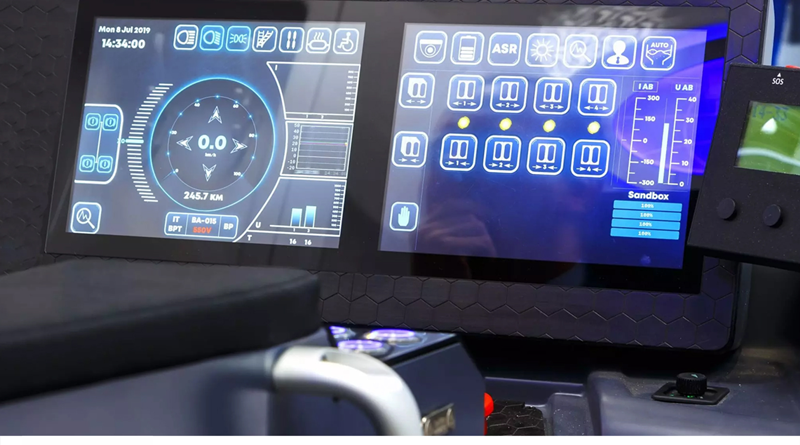Rugged and reliable touch solutions for transport systems and in-vehicle applications
Support for UV and corrosion resistance with extended temperature specifications
Display solutions and embedded systems provider Review Display Systems Inc. (RDS) has announced the availability and support for a wide range of PCap touch solutions for in-vehicle and transportation applications from leading global touch solution supplier AMT.
Transportation systems, vehicles, and vessels are operated in terrestrial, subterranean, atmospheric, and marine environments. The display and touch technologies used in these systems must provide dependable operation under various operating environments and conditions.
Operating environments will present challenges, including temperature extremes, temperature change, magnetic and electrical noise, mechanical shock and vibration, ultraviolet radiation, and liquid/fluid substances. These factors all pose potential threats to reliable and consistent touchscreen operation.
Temperature immunity
User displays employing touchscreen interfaces must provide reliable and stable operation under temperature extremes while coping with rapid temperature variations.
Touchscreen solution provider AMT develops and supplies PCap (projected capacitive) touch panels that are specified to an automotive standard operating temperature range of -40°C to +85°C and a storage temperature range of -50°C to +90°C. Temperature change is tested with thermal cycling of -40°C (30 minutes) to +85°C (30 minutes) for 100 cycles.
UV resistance
Transportation systems and infrastructure equipment are often operated extensively in outdoor environments and, as a necessity, must withstand prolonged exposure to direct sunlight. An unprotected system subjected to extended UV (ultraviolet) radiation can cause yellowing, hazing, and material degradation.
AMT PCap touchscreen solutions have been successfully tested to strict industry standards, including accelerated UV aging and weathering standard ASTM G154 Cycle 1 – 1,000 hours and environmental conditions standard MIL-STD-810H Pro 1 – 1,000 hours.
Ambient light
Light reflection in high ambient light environments can impact display image clarity and visibility. Optical bonding is used to eliminate internal air gaps, which reduces internal reflections and refraction effects. AMT also offers touch panels with a Low-Reflective (LR) design to aid and assist in improved image legibility in bright light conditions.
EMC and noise immunity
Electromagnetic compatibility (EMC) is essential in all transportation applications. The Federal Aviation Administration (FAA) regulations require all devices installed on aircraft to pass certification to DO-160 Environmental Conditions and Test Procedures for Airborne Equipment. Employing suitable integration and firmware adjustment, AMT PCAP touch solutions can meet DO-160 Conducted RF Emission at 150KHz to 152MHz and Radiated RF Emission at 100MHz to 6000MHz test standards. AMT’s hardware and software design solutions enable excellent electromagnetic immunity for all transportation applications.
Designed for purpose
Operator displays on public transport systems often adopt dual-screen redundancy designs to mitigate against unexpected failure circumstances. A dual-screen operator display can incorporate two touchscreens using just one piece of integrated cover glass. The electric fields generated between the two projected capacitive (PCap) touch screens can interfere with each other.
AMT has conducted many internal tests and used different signal frequencies to mitigate the problem of interference and ensure dual-screen applications can be successfully deployed.

